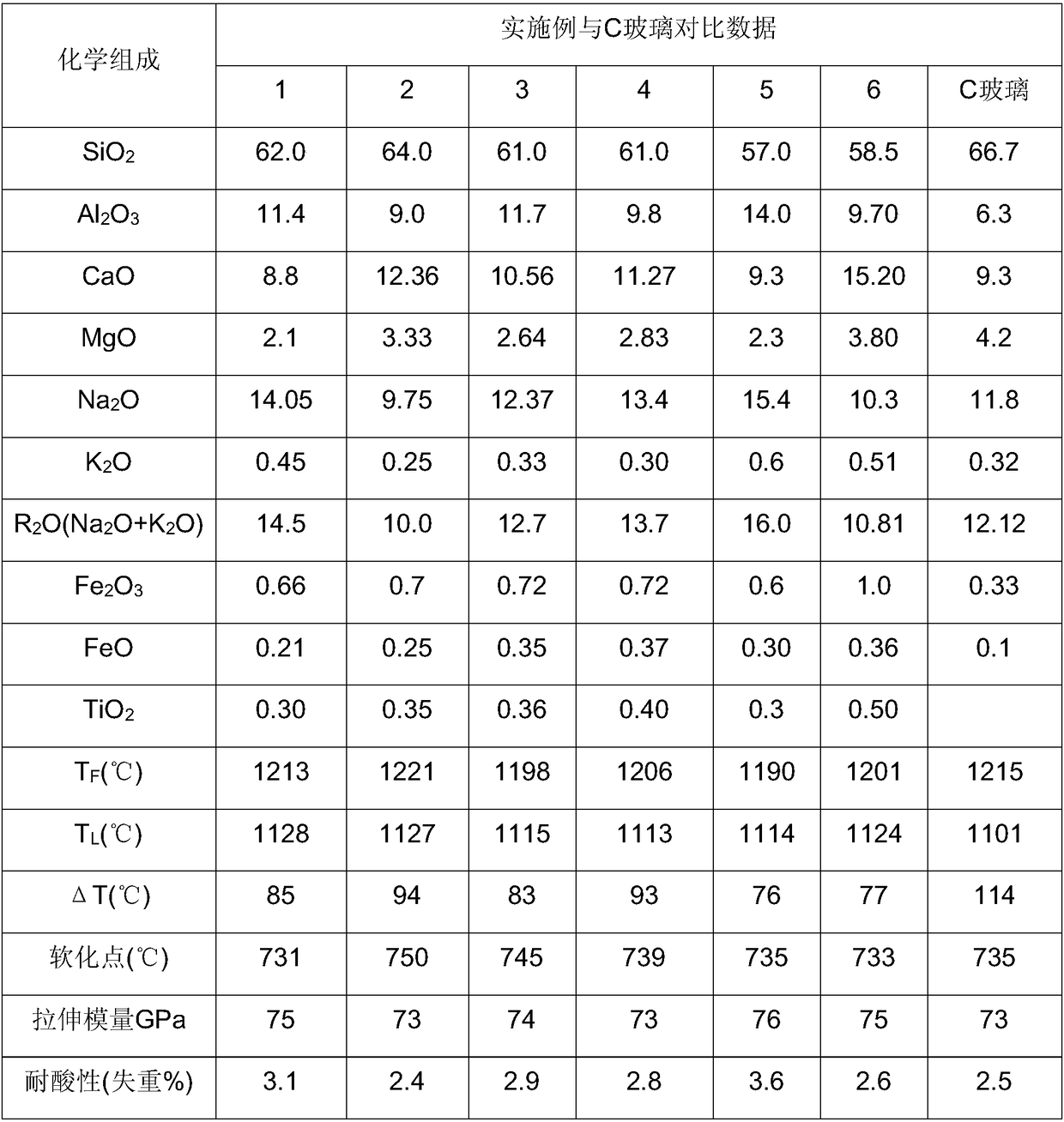Fiberizable glass composition and preparation method
A glass composition and fiberization technology, applied in glass manufacturing equipment, manufacturing tools, etc., can solve the problems of energy loss, high energy cost ratio, waste, etc., and achieve the effect of reducing formula cost and reducing the amount of soda ash used
- Summary
- Abstract
- Description
- Claims
- Application Information
AI Technical Summary
Problems solved by technology
Method used
Image
Examples
Embodiment 1
[0026] Example 1. Using 20 parts of silica sand, 7 parts of limestone, 8 parts of dolomite, 50 parts of albite and 15 parts of soda ash to form a batch, melting at 1400°C-1500°C, the resulting glass composition SiO 2 The content is 62%, Al 2 o 3 content of 11.4%, RO content of 10.9%, R 2 O content is 14.5%, Fe 2 o 3 The content is 0.66%, TiO 2 Content is 0.3%, molding temperature (T F ) is 1210°C-1215°C.
Embodiment 2
[0027] Example 2, using 10 parts of silica sand, 11 parts of limestone, 13 parts of dolomite, 38 parts of albite, 20 parts of perlite and 8 parts of soda ash to form a batch, melting at 1400°C-1500°C, the resulting glass composition SiO 2 The content is 64%, Al 2 o 3 content of 9.0%, RO content of 15.69%, R 2 O content is 10.0%, Fe 2 o 3 The content is 0.70%, TiO 2 The content is 0.35%. Glass composition molding temperature (T F ) is 1215°C-1225°C, and the liquidus temperature is 1109°C-1120°C.
Embodiment 3
[0028] Example 3, using 2 parts of silica sand, 10 parts of limestone, 10 parts of dolomite, 68 parts of perlite and 10 parts of soda ash to form a batch, melting at 1400°C-1500°C, the resulting glass composition SiO 2 The content is 61%, Al 2 o 3 content of 11.7%, RO content of 14.1%, R 2 O content is 13.7%, Fe 2 o 3 The content is 0.72%, TiO 2 The content is 0.36%. Glass composition molding temperature (T F ) is 1191°C-1202°C, and the liquidus temperature is 1080°C-1107.
PUM
 Login to View More
Login to View More Abstract
Description
Claims
Application Information
 Login to View More
Login to View More - R&D
- Intellectual Property
- Life Sciences
- Materials
- Tech Scout
- Unparalleled Data Quality
- Higher Quality Content
- 60% Fewer Hallucinations
Browse by: Latest US Patents, China's latest patents, Technical Efficacy Thesaurus, Application Domain, Technology Topic, Popular Technical Reports.
© 2025 PatSnap. All rights reserved.Legal|Privacy policy|Modern Slavery Act Transparency Statement|Sitemap|About US| Contact US: help@patsnap.com


